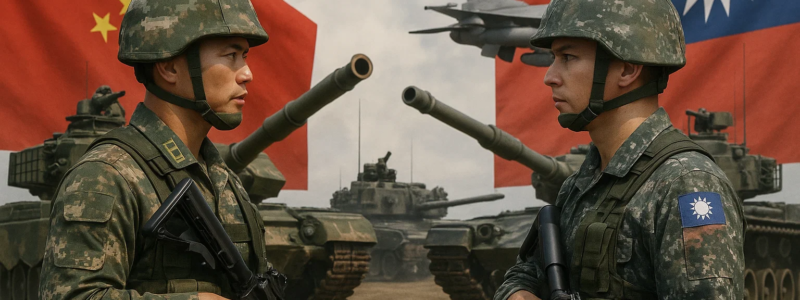
Against the backdrop of ever-increasing tensions in the Taiwan Strait in 2025, China and Taiwan continue their military demonstrations of force. The PRC is conducting exercises near the island, while Taiwan is mobilizing reservists and deepening cooperation with Western partners.
Experts Club offers a comparison of key indicators of the military capabilities of the parties.
Military capabilities of the People’s Republic of China (PRC)
Number of personnel:
2 million active military personnel
510,000 reservists
Over 1 million in the People’s Armed Police Force
Ground forces:
5,250 main battle tanks (Type 99, Type 96)
9,000+ artillery systems, including PCL-191 multiple launch rocket systems
Air Force (PLAAF):
Approximately 3,400 aircraft
1,300+ fighter jets (J-10, J-16, J-20 — 5th generation)
300 strategic bombers (H-6)
Hundreds of strike UAVs
Navy (PLAN):
340+ warships (the largest fleet in the world)
3 aircraft carriers (Liaoning, Shandong, Fujian)
70+ submarines, including 12 nuclear submarines
Latest Type 055 missile destroyers
Nuclear arsenal:
410–500 warheads (according to SIPRI estimates)
Active expansion of missile arsenal: DF-31AG, DF-41
Air, sea, and land delivery platforms
Technological achievements:
Development of DF-ZF hypersonic missiles
Cyber forces and space forces
Own satellite navigation system BeiDou
Military potential of Taiwan (Republic of China)
Number of personnel:
170,000 active military personnel
Up to 1.5 million reservists
Army:
1,000 battle tanks (M60A3, CM11, M1A2T)
2,200 artillery systems (including HIMARS, M109)
Air Force (RoCAF):
500 aircraft
180 F-16V, Mirage 2000-5, IDF Ching-Kuo fighter jets
Modern air defense systems: Patriot PAC-3, Sky Bow III
Navy:
26 combat ships
4 submarines (including new domestic Hai Kun)
New Tuo Chiang class corvettes
Nuclear doctrine:
Taiwan does not have nuclear weapons.
Cyber security forces and latest purchases:
Continuous modernization with support from the US
Purchases of F-16V, Harpoon missiles, HIMARS systems
Strengthening defense based on the concept of “asymmetric strategy”
Despite China’s military superiority, Taiwan enjoys support from:
The US (Taiwan Relations Act, $20 billion in arms supplies)
Japan (strategic cooperation)
Canada, Australia, the United Kingdom (political support, military exercises)
The EU does not officially recognize Taiwan, but is developing trade and exchanges.
As of 2025, only 10 countries officially recognize Taiwan as an independent state:
Belize
Haiti
Marshall Islands
Nauru
Palau
Saint Vincent and the Grenadines
Saint Lucia
Swaziland (Eswatini)
Tuvalu
Paraguay
Although China has an unquestionable military advantage over Taiwan, the latter is relying on defense modernization, mobilization potential, support from allies, and the development of asymmetric strategies.
The conflict over Taiwan poses global risks to stability in the Asia-Pacific region and around the world.